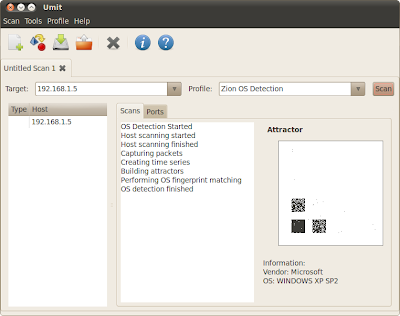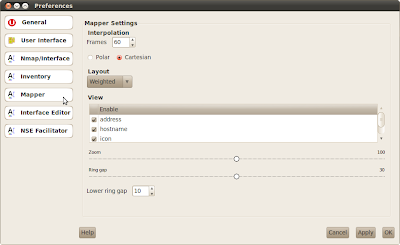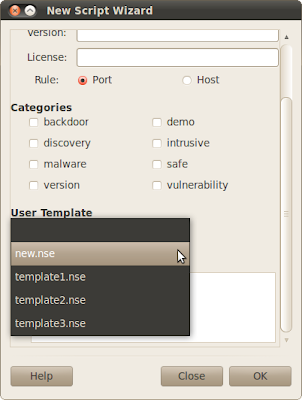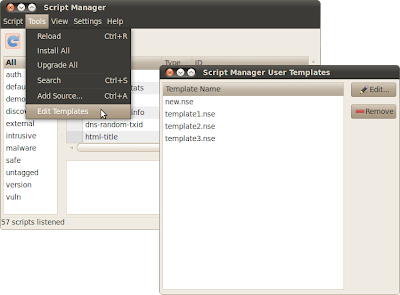Hi everybody.
In this post i will present the work done by me at GSoC 2010. In resume the work was about improve and integrate Zion, QuickScan, NSE Facilitator and Preferences Windows.
Zion
Zion was the most challenging task, because it involves a complex theory developed by João Paulo Medeiros (thanks for your support).
3 functionalities were developed in Zion (all available in Umit as profiles) :
- OS Detection
- Syn Proxy Detection
- Honeyd Detection
In figure below is shown a Zion OS Detection, done to a host running Windows XP. In this windows is shown the feedback of scan steps, the information about OS running on target host, and the graph of the attractor (fingerprint of OS)

Preferences Windows
Preferences Window was integrated in the new branch, with some changes. To the Preferences Window was added the following options:
Mapper (Topology) settings:

NSE settings:
To allow open QuickScan when it's iconified, a shortcut key was added (alt+Q), but it raised a big problem: there isn't direct support in python at linux to listen for key events, when the program window don't has the focus. This problem was solved creating a new keybinder library (umit-keybinder), that uses pyHook [1] for windows, and for unix, a bind for an existing keybind module written in C [2]. The keybinder can be found at umit svn.
The NSE Facilitator branch was integrated in the new branch, and some improvements were made. To facilitate the creation of new NSE scripts, it's now possible to create script templates, and then, use them when creating new scripts, as we can see in figure below:


A new options was added to Script Manager menu, to allow manage the created user templates. All created templates are shown in this windows, and it's possible to edit or delete them. These templates can be created in Script Editor, selecting the option "Save as Template" in File menu.


[2] - http://trac.umitproject.org/browser/umit-keybinder/code/bind.c



